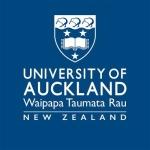Niue and Cook Island Māori languages threatened
Niue and Cook Island Māori languages will disappear from New Zealand within a generation unless urgent action is taken say researchers from The University of Auckland.
The research by Faculty of Education Senior Lecturer John McCaffery and Postgraduate research student Judy Taligalu McFall-McCaffery was released today.
“Our research indicates that Pacific Island languages in New Zealand show significant signs of language shift and loss, with several languages, especially Cook Island Māori and Niue language unlikely to survive unless we do something now,” says Mr McCaffery.
“There are no plans at present for Niue or Cook Island bilingual education so prospects for the survival of these indigenous languages within the realm of New Zealand seem very unlikely.”
The research paper, O tatou ō aga'i i fea?/ `Oku tau ō ki fe? Where are we heading?: Pacific languages in Aotearoa/New Zealand, examines the current state of Samoan, Tongan, Niue and the dialects of Cook Island Māori – the four largest Pacific Island languages in New Zealand.
The research draws together statistics, research, public data and community information from New Zealand and the Pacific Islands. This includes information collected during visits to the four Pacific Island nations, 2006 Census data and The Pasifika Languages of Manukau Project - a major sociolinguistic study which examined Samoan, Tongan, Niue and Cook Island dialects in Auckland between 2000 and 2008.
Mr McCaffery says fewer than five percent of the New Zealand-born population can speak Cook Island Māori and less than 11 percent of the Niue population can speak the Niue language.
“These figures are lower than New Zealand Māori was before the start of Kohanga Reo and Kura Kaupapa Māori immersion schools,” he says.
Mrs McFall-McCaffery says that even in Samoan and Tongan communities only about 44 percent of the New Zealand-born population can speak their own language and this is predicted to drop rapidly in the next generation.
“This implies that fewer than 25 percent will be able to speak their own languages in the next generation as international research by Joshua Fishman and historical trends of decline of Pacific languages in New Zealand indicate around half of the New Zealand-born Samoan and Tongan parents are likely to raise their children in their first languages,” she says.
“Data from other groups show that as the percentage of the New Zealand-born population increases, the migration of new speakers from the islands has less and less of an impact until, as in the case of the Cooks and Niue, there is virtually no new migration,” says Mrs McFall-McCaffery.
Mr McCaffery says in the islands themselves the effects of decades of New Zealand’s colonial administration have left the languages without status, value or perceived uses.
“This started in the early 1900s when New Zealand, Australian and UK educators working in the Pacific Islands would punish students for speaking their own languages at school.”
“It was reinforced by the colonial rule that only English was allowed to be taught above year four – the result was this left many Pacific peoples feeling their languages were of little value in education and academic learning,” he says.
“This lack of pride, self confidence and the belief that family languages are only for private use and English only must be used for education and public occasions, which emerged in the Pacific, was an attitude carried by migrants who came to New Zealand. It was supported by New Zealand’s monolingual education policies and has subsequently become deeply entrenched in New Zealand society,” he says.
Mr McCaffery says the only research-based strategy that is likely to provide for future survival of all Pacific Island languages is expanding the role of Pacific Island languages in education and into the public domain through bilingual and immersion education.
“Unless this changes soon, the future looks very grim indeed for all Pacific languages,” he says.
More comprehensive research looking at the future of the four Pacific Island languages is needed to back-up the study’s findings - what the research paper does, however, is provide a platform for further research, says Mr McCaffery.
The research paper is published in the Pasifika Special Edition of Alternative - an International Journal of Indigenous Scholarship published by Ngā Pae o te Māramatanga based at The University of Auckland.
The Journal is being launched at a special function celebrating the outcomes of the 2009 Critiquing Pasifika Education conference at AUT University’s Manukau Campus tonight.
